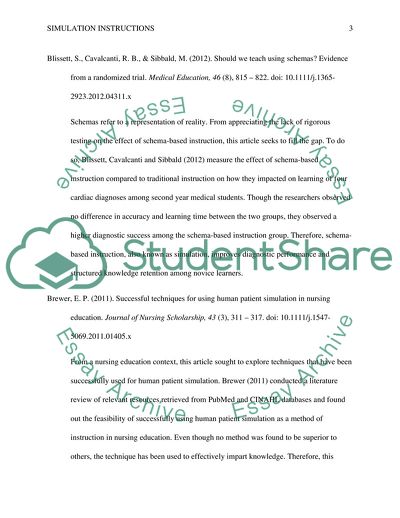Cite this document
(Simulation as an Instructional Methodology: An Annotated Bibliography Example | Topics and Well Written Essays - 1750 words - 1, n.d.)
Simulation as an Instructional Methodology: An Annotated Bibliography Example | Topics and Well Written Essays - 1750 words - 1. https://studentshare.org/education/1810362-annotated-bibliography
Simulation as an Instructional Methodology: An Annotated Bibliography Example | Topics and Well Written Essays - 1750 words - 1. https://studentshare.org/education/1810362-annotated-bibliography
(Simulation As an Instructional Methodology: An Annotated Bibliography Example | Topics and Well Written Essays - 1750 Words - 1)
Simulation As an Instructional Methodology: An Annotated Bibliography Example | Topics and Well Written Essays - 1750 Words - 1. https://studentshare.org/education/1810362-annotated-bibliography.
Simulation As an Instructional Methodology: An Annotated Bibliography Example | Topics and Well Written Essays - 1750 Words - 1. https://studentshare.org/education/1810362-annotated-bibliography.
“Simulation As an Instructional Methodology: An Annotated Bibliography Example | Topics and Well Written Essays - 1750 Words - 1”. https://studentshare.org/education/1810362-annotated-bibliography.


